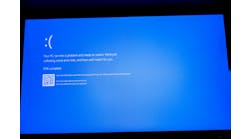Secure enclaves like the one found in iPhones are intended to be impenetrable fortresses that handle tasks too sensitive for the main CPUs they work with. AMD’s version of that co-processor contains a raft of critical flaws that attackers could exploit to run malware that’s nearly impossible to detect and has direct access to a vulnerable computer’s most sensitive secrets, a report warned. The chips also contain what the report called “backdoors” that hackers can exploit to gain administrative access.
The flaws—in AMD’s EPYC, Ryzen, Ryzen Pro, and Ryzen Mobile lines of processors—require attackers to first gain administrative rights on a targeted network or computer, which is a hurdle that’s difficult but by no means impossible to clear. From there, attackers can exploit the vulnerabilities to achieve a variety of extraordinary feats that would be catastrophic for the owners’ long-term security. Among other things, the feats include:
- Running persistent malware inside the AMD Secure Processor that’s impossible—or nearly impossible—to detect
- Bypassing advanced protections such as AMD’s Secure Encrypted Virtualization, Firmware Trusted Platform Module, and other security features, which are intended to secure systems and sensitive data in the event that malware infects a computer’s operating system
- Stealing credentials a vulnerable computer uses to access networks
- Physically destroying hardware by attackers in hardware-based “ransomware” scenarios
The four classes of vulnerabilities—dubbed Masterkey, Ryzenfall, Fallout, and Chimera—were described in a 20-page report headlined “Severe Security Advisory on AMD Processors.”
The advisory came with its own disclaimer that CTS—the Israeli research organization that published the report—”may have, either directly or indirectly, an economic interest in the performance” of the stock of AMD or other companies. It also discloses that its contents were all statements of opinion and “not statements of fact.”
Critics have said the disclaimers, which are highly unusual in security reports, are signs that the report is exaggerating the severity of the vulnerabilities in a blatant attempt to influence the stock price of AMD and possibly other companies. Critics also faulted the researchers for giving AMD just 24 hours to review the report before it went public and using a dedicated-website to bring attention to the flaws.
AMD officials released a statement that read: “At AMD, security is a top priority and we are continually working to ensure the safety of our users as new risks arise. We are investigating this report, which we just received, to understand the methodology and merit of the findings.”

